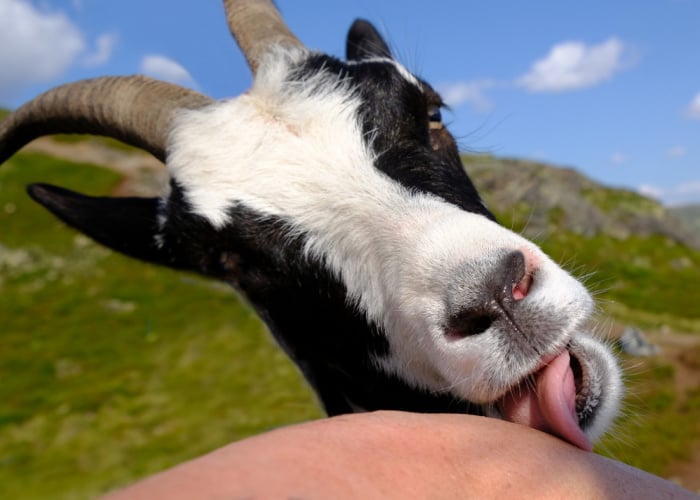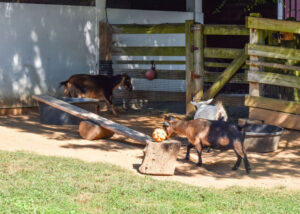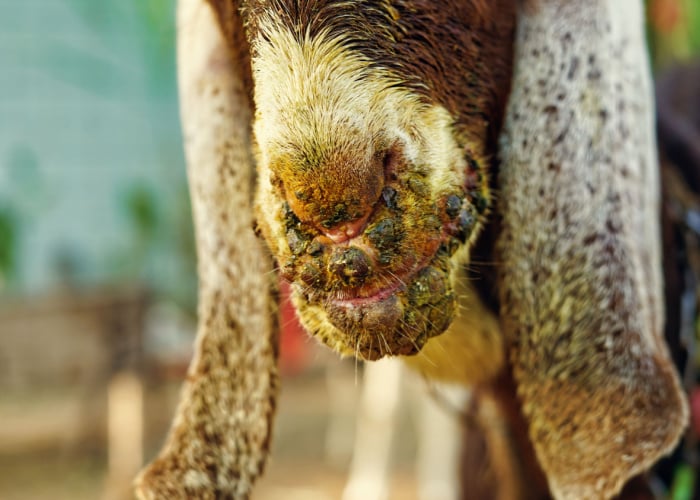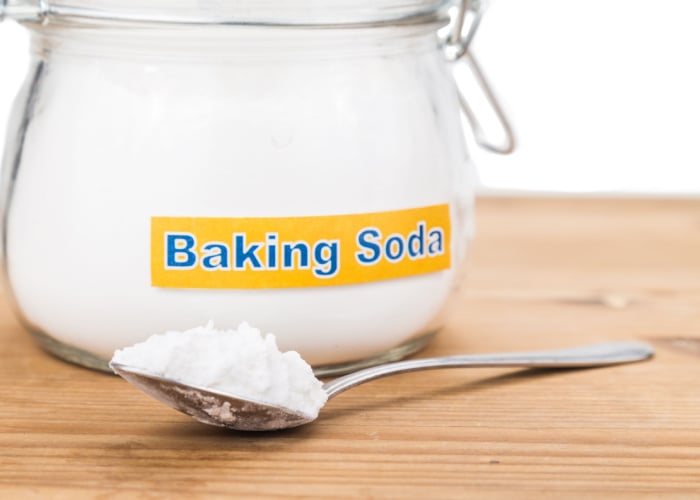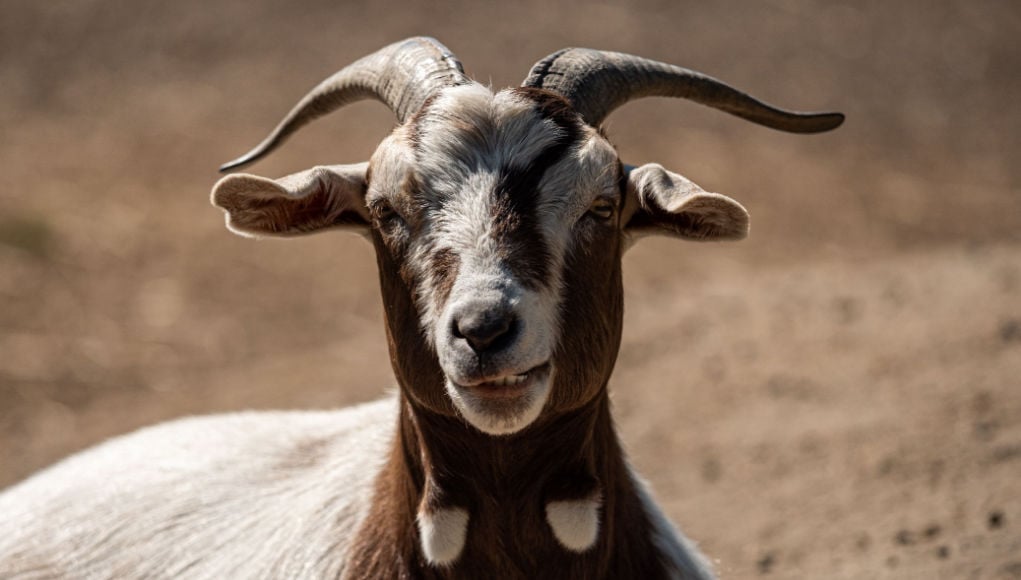The simple and straightforward answer to the question “Do Goats Sweat?” is YES, they do.
However, their sweat is different from ours.
They don’t produce sweat like we do or expel it quite like us.
Goats don’t have sweat glands, which are basically the express route.
And goats just don’t have that.
Instead, they slowly dissipate sweat through the skin.
Because of this, their sweat is not nearly as moisture-rich as a human’s.
Their lips and snouts quickly dampen as a way to let go of their body’s internal heat.
Panting is approximately eight times more effective than sweating for a goat, so you’re far more likely to see a panting goat than a sweaty one.
How Hot Is Too Hot for a Goat?
All goat breeds have different tolerances for heat, and there will be tolerance differences from individual to individual.
The following information is a general guideline fromSouth Dakota State University Extension.
For the most part, temperatures under 80 degrees Fahrenheit combined with relative humidity under 80% are fine for goats and shouldn’t pose any threats to your herd under normal circumstances.
Here are a few quick examples, which you can find in Table 1.
Sheep and Goat Temperature Humidity Index (THI) from South Dakota State University.
- An 85-degree (F) day with relative humidity under 75% is safe. It’s a moderate risk from 80 to 85% humidity, and 90% and up, it’s a severe risk.
- A 90-degree (F) day with relative humidity under 50% is safe. It’s moderate from 55 to 60%; from 65 to 70%, it’s severe. And at 75% and higher, it’s extreme.
- A 100-degree (F) day with low humidity under 25% is a moderate risk. It’s a severe risk from 30 to 40% and extremely dangerous from 45% and up.
- Any temperature above 100 degrees, regardless of the relative humidity, can be potentially fatal to goats.
How To Keep Goats Cool in Hot Weather
Goats are known for their hardy nature and adaptability to various environments.
But goats may struggle to regulate their body temperature effectively when faced with extreme heat.
Here are a few ways you can help them out.
Hydrate with Unlimited Water
One of the most crucial aspects of keeping goats cool in hot weather is providing them with unlimited access to fresh, clean water.
Water is essential for goats to regulate their body temperature and hydrate properly.
Ensure that water sources are easily accessible and regularly replenished.
If you wouldn’t drink out of their bucket or container, change it, clean it, fix it, or do whatever you have to to make that water appealing.
If you don’t want it, they probably don’t either.
Ensure the water is fresh, the container is clean, and the setup is not in direct sunshine, where it will get excessively hot.
Goats should always have unlimited access to water, but at the bare minimum, they need 1 to 3 pounds of water for every 1 pound of dry matter that they consume.
You can encourage water consumption by providing free-choice salt and mineral blocks.
Offer Plenty of Shade
阴影是另一个六世tal element in protecting goats from the scorching sun.
Create shaded areas within the goat’s enclosure, using natural shade from trees or man-made structures like shelters or canopies.
It’s best practice to give your animals free access to barns and pastures when in extreme temperatures.
This lets them choose the best and most comfortable position for themselves.
If you have time to plan for the upcoming summer heat, consider planting fast-growing vegetation near your goat’s enclosure– just out of their reach so they can’t eat it.
Sunflowers, climbing vegetables, and vines are perfect for cooling and natural shade for your goats.
Best of all, it can feed them refreshing treats toward the middle and end of summer.
Providing ample shade helps goats find relief from direct sunlight and reduces the risk of overheating.
Provide Fans
Usually, goats will prefer to lie down in tall grasses under a shade tree next to the water if that’s an option.
If they can’t find relief there, then you may need to install fans either in your barn or outside in your lot.
Use an appropriate indoor/outdoor fan to stand up to the elements.
Better yet, set a block of ice, a cooler of ice, frozen water bottles, or frozen milk jugs behind or in front of the fan to mimic an air conditioner.
You can also set out pallets for your goats to lay on in the shade, preferably near a cross-breeze or a fan.
This lets them get much-appreciated air circulation under their bodies, which will help cool them off faster.
Add Misters to Your Barn
Another added measure to cool your herd off is a misting system.
Don’t have one? You can also use a simple sprinkler outside.
Put it in a shady area of their pasture where the extra water will be helpful for your growing vegetation.
Move it around every day if possible to prevent mud and trampled grasses.
Carefully Rinse Goats Off with Cool Water
If your goats are really suffering in the heat, you can cool them off with water.
To accomplish this, use a kiddie pool for them to climb into at their leisure– or carefully hose them down.
If you hose your goats down, spray the hooves first and slowly work your way up their legs.
This will acclimate them to the temperature change in a safe way without putting them into shock.
You may not need to go any higher than the legs.
If you choose to spray more of their body, get their chest, the sides of their stomach, and underneath their necks.
Goats may dip their horns in the stream of water; this will cool them off in a hurry, so don’t do this unless your goat initiates it.
Remember that goat horns are full of blood vessels and are very sensitive.
Do not spray the top of the neck or the top of the back.
If you get the top of your animal wet, its fur will pack down, and heat will get trapped there.
It’s best to leave those areas dry so the heat on their bodies can escape quicker.
Offer Appropriate Feeds
Corn, sugar, and molasses are known to warm rumen animals up, so avoid those.
Hay, brush, brambles, alfalfa, and other roughage also warm goats up, but not to the same degree as sugar-dense foods.
Easily palatable foods that are low in sugars, such as some forms of pelleted goat feed (chopped and pelleted roughage, for example), will not heat the rumen up as much and may help your goats get in their calories while staying cooler.
Goats should always have access to roughage or pasture– but offering them small, limited quantities of easy-to-digest foods is not a bad idea when it’s really hot out.
其他好的选择包括少量的裁判rigerated or frozen fruits and vegetables, with vegetables likely being the slightly better option.

Don’t Dehorn Your Goats
I understand that you may not always have a choice here.
Sometimes goats come to your farm already polled.
When goats have intact horns, some families worry about their children’s or visitor’s safety.
And many breeder shows and associations require goats, especially dairy breeds, to be dehorned.
But if you have the option, please leave your goats’ horns intact, especially if you live in a hot area.
There are other reasons why dehorning isn’t ideal, too, but that’s another topic.
Horns are Innately Designed to Cool Goats Off
Horns are made up of bone tissue covered with a keratin sheath, similar to our nails.
They have a rich blood supply and are connected to a network of blood vessels, making them an efficient way for goats to dissipate heat.
When temperatures rise, goats’ blood vessels in the horns dilate, allowing increased blood flow to the surface.
This enhanced blood flow aids in releasing excess heat from the body, effectively cooling the goat.
In addition to increasing blood flow, goat horns play a crucial role in heat exchange.
As blood flows through the vessels in the horns, it comes into contact with the surrounding air.
这种接触促进传热,使the warm blood to cool down before it returns to the rest of the body.
The process of heat exchange through the horns helps regulate body temperature and prevents goats from overheating in hot weather conditions.
Allowing goats to keep their horns respects their natural biology and helps them cool off faster and more efficiently during unpleasant heat waves.
Keep Stressors to a Minimum
If possible, don’t travel during the heat of the day.
Don’t allow stressful animals, like stray dogs or any intrusive pets or livestock of any kind, near your goats, especially during the hottest parts of the day.
Don’t work, lead, or move your goats during the most intense parts of the day.
10 am to 4 pm should be their resting time.
Don’t change up herds unless absolutely necessary.
This includes weaning, adding new members to the herd, or moving members of your herd to different parts of your property.
Don’t clean their barn or change out their bedding. Wait until early morning or late evening to do this.
Leave your animals alone unless intervention is truly needed.
They’re exhausted, hot, and probably cranky.
And hey, you probably are, too; this is better for both you and them.
Signs of Heat Stroke in Goats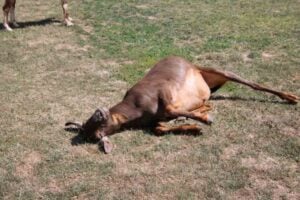
Ruminants have an especially difficult time with high temperatures because they basically have an internal heater in their stomachs. The fermentation of feed in their rumen produces heat, increasing the risk of heat stress and heat stroke.
Goat owners must be aware of the signs of heat stroke in goats, which may include:
- Rapid and shallow breathing
- Excessive panting
- Weakness or lethargy
- Increased heart rate
- Drooling or excessive salivation
- Dry or pale gums
- Refusal to eat or drink
- Elevated body temperature
- Unsteady gait or stumbling
- Bulgy or panicked-looking eyes
How to Help a Goat Suffering from Heat Stroke
Heat stroke is a serious condition that requires immediate attention.
If you suspect that a goat is suffering from heat stroke, follow these steps:
- Move the goat to a shaded and cool area.
- Provide fresh, cool water for the goat to drink.
- Wet the goat’s body with cool water, focusing on the head, neck, and underbelly.
- Use fans or misters to increase airflow and aid in cooling.
- Contact a veterinarian for further guidance and assistance.
- Prevention is always better than cure, so it is essential to take proactive measures to prevent heat stroke in goats by implementing the cooling techniques mentioned earlier. Regularly monitor the goats’ behavior and health during hot weather, and adjust their environment as needed.
Which Goat Breeds Are Good For Hot Climates?
Heat tolerance is an important characteristic to consider when raising goats in hot climates.
If you know that your area deals with high heat and humidity every year, you should consider raising breeds intentionally bred to thrive in your climate.
Remember that it’s not just a matter of heat, either.
Some breeds were developed in hot and arid climates, while others were developed in hot and humid areas.
Choose a breed that originated in or was developed in a similar climate.
Here is a brief overview of the nine best goat breeds known for their heat tolerance.
Use this to start your research process.
Spanish Goat
The Spanish Goat is a hardy breed well-adapted to hot and arid environments.
They have a heat-resistant coat and are known for their foraging abilities, making them excellent at grazing on sparse vegetation.
Alpine Goat
Alpine Goats are known for their adaptability to various climates, including hot conditions.
They have a short coat that allows for better heat dissipation and are known for their high milk production.
San Clemente Goat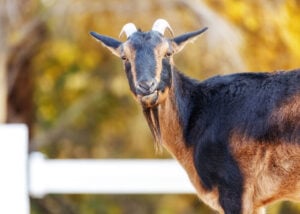
San Clemente Goats, also known as “Island Goats,” originate from San Clemente Island off the coast of California.
They have adapted to survive in a hot and dry climate, making them well-suited for arid regions.
Galla (Somali) Goat
The Galla Goat, also known as the Somali Goat, is a breed native to the arid regions of Somalia.
They are known for their heat tolerance, disease resistance, and ability to thrive on limited forage.
Pygmy Goats
Pygmy Goats are a small breed known for their friendly nature and adaptability to various climates.
While they have a dense coat, they have good heat tolerance and can thrive in hot environments.
Nigerian Dwarf
Nigerian Dwarf Goats are a miniature breed originating from West Africa.
They have a compact size and a short coat, which aids in heat tolerance.
They are well-suited for hot climates and are known for their high milk production relative to their size.
Nubian
Nubian Goats are known for their large floppy ears, which help dissipate heat.
They have a longer breeding season than other breeds and can adapt well to hot climates.
They are also valued for their high milk production
Sable Goats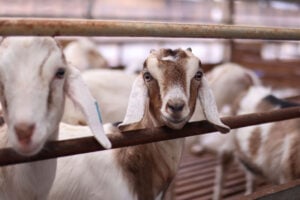
Sable Goats are a breed developed in South Africa specifically for heat tolerance and meat production.
They have a short coat, making them well-suited for hot climates, and are known for their hardiness and adaptability.
Rangeland Goats
Rangeland Goats are a crossbreed known for their ability to adapt to harsh environments, including hot and dry regions.
They are known for their excellent foraging abilities, resilience, and heat tolerance.
To learn more about heat-tolerant breeds and the above-mentioned goats, be sure to read our guide to themost heat and cold-hardy goat breeds.
With their natural adaptations and characteristics, these nine breeds are better equipped to withstand and thrive in hot weather conditions.
Still, you’ll need to still take care to offer proper management, including adequate shade, ventilation, and access to water– regardless of the breed– to ensure the well-being of your herd.
FAQs related to “Do Goats Sweat?”
Should You Worry If Your Goat Is Sweating?
If you notice your goat is sweating, you should be concerned.
Goats only sweat if it’s an emergency.
Before goats sweat, they pant; if that isn’t working, your goats are likely at risk of a heat stroke.
Do Goats Use Their Horns To Cool Off?
A goat uses horns to cool off. Goat horns contain blood vessels.
As blood flows through the vessels in the horns, it comes into contact with the surrounding air.
这种接触促进传热,使the warm blood to cool down before it returns to the rest of the goat’s body.
Do Goats Pant or Sweat?
Goats usually pant to cool down, but they will sweat if it’s hot enough and they are in duress from the heat.
Panting is much more effective for goats than sweating.
Do Goats Have Sweat Glands?
Goats do not have sweat glands, but they are still able to sweat small amounts.
The sweat very slowly dissipates through their skin.
This process is slow, but it allows goats to sweat somewhat.
Do Goats Sweat: Final Thoughts
While goats do sweat, they do not sweat as profusely as humans.
And even though many goat breeds originated in hot regions of the world, they can still suffer from heat stress and heat stroke during heat waves.
Understanding how goats regulate their body temperature and implementing appropriate cooling measures is crucial for their well-being.
By providing unlimited water, ample shade, fans, misters, and careful rinsing with cool water, goat owners can help their animals stay cool and comfortable during the scorching summer months.
Remember to be vigilant for signs of heat stroke and take immediate action if necessary.
By prioritizing their goats’ welfare and implementing these strategies, owners can ensure they’re happy and healthy all year round.
